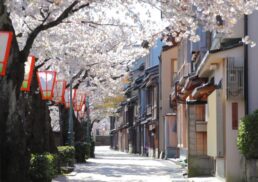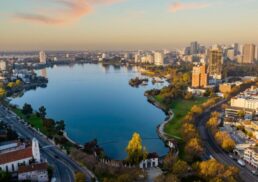Brisbane, Australia, boasts a humid subtropical climate, specifically the Brisbane Australia climate, with warm weather year-round. Summers are hot and rainy, while winters are mild and dry. This guide covers seasonal weather, temperatures, and rainfall patterns.
Table of Contents
Key Takeaways
Brisbane has a humid subtropical climate, characterized by warm to hot weather year-round, with distinct seasonal variations affecting temperatures and precipitation.
The summer months (December to February) bring high temperatures and significant rainfall, while autumn (March to May) offers milder weather and reduced humidity, making it an ideal time for outdoor activities.
Late September to late April is considered the best time to visit Brisbane, providing warm-weather conditions suitable for a variety of outdoor attractions and activities.
Overview of Brisbane’s Climate
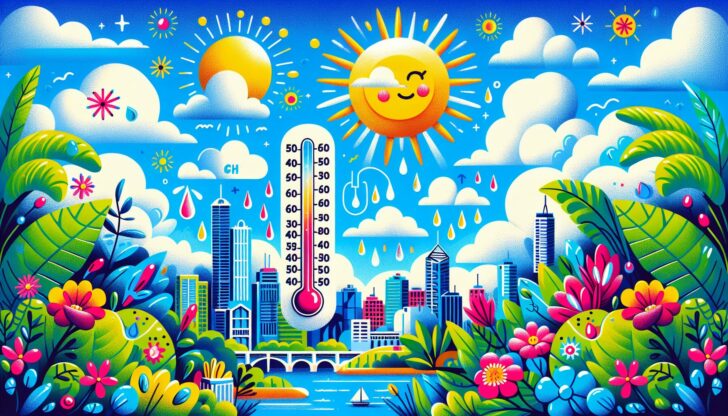
Brisbane has a humid subtropical climate, classified under the Köppen climate classification as Cfa. This means the city experiences warm to hot weather throughout most of the year, making it a favorite among those who enjoy sunny days and outdoor activities. The climate is influenced by its geographical location near the Coral Sea, which moderates temperature extremes and contributes to the city’s distinctive weather patterns.
Brisbane experiences distinct seasonal weather, with each season bringing its unique characteristics. Summers are typically hot and humid, while winters are mild with cooler evenings. Spring and autumn serve as transitional seasons, offering a mix of weather conditions that are generally pleasant and conducive to outdoor activities.
Average Temperatures in Brisbane
Brisbane’s average temperatures range from 50°F in winter months to 82°F in summer months, reflecting its subtropical climate. The hottest month is January, with average high temperatures reaching around 84°F, while the coldest month is July, with average low temperatures dropping to about 49°F. This broad range of temperatures makes Brisbane an attractive destination for those who prefer warmer climates year-round.
Daytime temperatures can be significantly higher than overnight temperatures, providing a stark contrast between the heat of the day and the cooler relief of the night. This pattern is particularly noticeable during the summer months, where the average daytime temperatures, high humidity, and heat give way to more comfortable evenings.
Year-Round Average Temperatures
Throughout the year, Brisbane’s average temperatures range from approximately 11°C to 29.8°C (51.8°F to 85.6°F). The average annual minimum temperature is 16.6 °C (62 °F), while the maximum is 26.6 °C (80 °F). This consistency in temperature, coupled with the city’s many sunny days, makes Brisbane a year-round destination for tourists and locals alike.
Despite the warm averages, temperatures in Brisbane rarely exceed 35 °C (95 °F), maintaining a comfortable climate even during the peak of summer. The coldest months, June and July, still offer mild conditions that are quite pleasant compared to many other regions.
Daytime vs. Nighttime Temperatures
Daytime temperatures in Brisbane can reach as high as 29.8°C (85.6°F) during the summer months, providing plenty of warmth for beachgoers and outdoor enthusiasts. However, as the sun sets, the temperatures drop significantly, offering a cooler respite from the day’s heat.
This transition from hot days to cooler nights is a hallmark of Brisbane’s climate. The cooler nighttime temperatures are particularly pronounced in winter, where the early mornings can be quite brisk, providing a refreshing start to the day before the sun warms things up again.
Seasonal Weather Patterns
Brisbane experiences distinct seasonal variations in temperature and precipitation throughout the year. Each season brings its unique weather patterns, influencing everything from daily activities to travel plans. Understanding these seasonal changes is crucial for making the most of your time in Brisbane.
From the hot, humid summers to the mild, dry winters, Brisbane’s weather offers something for everyone. The transitional seasons of autumn and spring provide a pleasant mix of conditions, often considered the best times to visit Brisbane for outdoor activities and sightseeing.
Summer (December to February)
Summer in Brisbane, from December to February, is characterized by high temperatures and humidity levels. Average temperatures range from approximately 69.8°F to 85.6°F, with frequent thunderstorms adding to the mix. These storms often bring heavy rainfall, making summer the wettest season in Brisbane.
While the hot and humid conditions can be challenging for some, the vibrant summer atmosphere, coupled with the city’s numerous indoor and outdoor attractions, ensures that there’s always something to do.
However, it’s essential to be prepared for sudden weather changes, including severe thunderstorms that can bring torrential rain and strong winds.
Autumn (March to May)
Autumn in Brisbane, from March to May, brings cooler temperatures and a noticeable drop in humidity. Average temperatures during this season generally range from 15°C to 25°C, providing a comfortable climate for outdoor activities. The reduced rainfall also makes autumn one of the most enjoyable times to visit Brisbane.
The mild conditions and clear skies are perfect for exploring Brisbane’s parks, gardens, and outdoor events. Whether you’re hiking, cycling, or simply enjoying a leisurely stroll along the Brisbane River, autumn offers an ideal setting for making the most of Brisbane’s natural beauty.
Winter (June to August)
Winter in Brisbane, from June to August, is mild and dry, with warm daytime temperatures and cooler evenings. Average temperatures typically range from 11°C to 21°C (51.8°F to 69.8°F), making it a comfortable season for outdoor activities. The low humidity levels also contribute to the pleasant conditions.
Despite being the coldest months, winter in Brisbane is far from harsh. The clear, sunny days are ideal for exploring the city’s outdoor attractions, from the scenic Brisbane River to the stunning coastal areas nearby. It’s a season that combines the best of mild weather and vibrant city life.
Spring (September to November)
Spring in Brisbane, from September to November, sees a gradual rise in temperatures and occasional rain showers as the season transitions to summer. Average temperatures during this period range from 15°C to 25°C, providing warm, sunny days often moderated by cool breezes from the sea.
This season is marked by a mix of sunny days and sporadic rainfall, creating a vibrant and dynamic atmosphere. Early spring is an excellent time for outdoor adventures, with the pleasant weather making it ideal for exploring Brisbane’s natural and urban landscapes.
Rainfall and Humidity
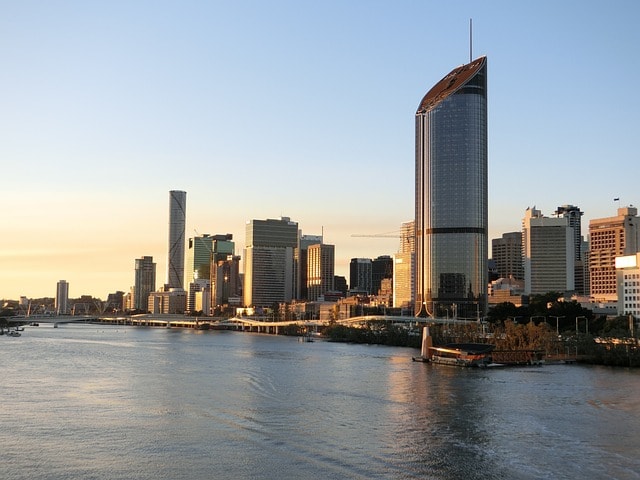
Brisbane experiences average rainfall patterns that contribute to its lush greenery and vibrant ecosystem. The city has a distinct wet season from October to March, characterized by heavy rainfall and high humidity levels. This period is crucial for maintaining the region’s natural beauty and supporting its diverse flora and fauna.
Humidity levels in Brisbane are influenced by its subtropical climate, with the highest levels observed during the summer months. Conversely, winter brings the lowest average humidity, leading to a noticeable seasonal variation that affects everything from daily comfort to outdoor activities.
Average Rainfall
Brisbane experiences a wet season from October to March, during which the city accumulates approximately 800 mm of rainfall. January is typically the wettest month, marked by heavy and frequent rain showers. The summer months, particularly from December to February, see the highest rainfall levels, averaging around 426.6 mm, often accompanied by thunderstorms.
During the dry period from April to September, Brisbane receives about 400 mm of rainfall, significantly less than the wet season. This reduction in precipitation makes the dry months ideal for outdoor activities and tourism, as the weather remains pleasant and relatively dry.
Humidity Levels
Brisbane’s humidity is typically highest during the summer months, especially in January, when the air feels muggier due to elevated moisture levels. The combination of high temperatures and humidity can make summer days feel particularly oppressive, but the evenings often bring some relief with cooler temperatures.
In contrast, autumn and winter bring lower humidity levels, providing a drier and more comfortable climate. This seasonal variation in humidity is significant, with the lowest levels occurring during the winter months, making it an ideal time for those who prefer milder conditions.
Sunshine Hours and Daylight
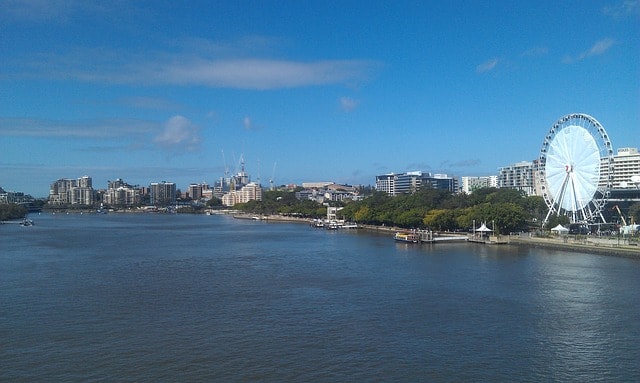
Brisbane is known for its sunny climate, which significantly contributes to the city’s overall appeal. On average, Brisbane enjoys approximately 7 hours of sunshine per day throughout the year. This abundance of sunshine not only enhances the city’s vibrant atmosphere but also supports a wide range of outdoor activities and events.
The variation in daylight hours throughout the year also plays a crucial role in shaping Brisbane’s climate. From the long, bright days of summer to the shorter, cooler days of winter, understanding these changes can help you make the most of your time in the city.
Daily Sunshine Hours
During the summer months, Brisbane averages around 8 to 9 hours of sunshine per day. January, in particular, stands out with an average of about 9 hours of sunshine daily, making it one of the sunniest periods of the year. This abundance of sunlight is perfect for beach outings, picnics, and other outdoor activities.
In contrast, the winter months see a decrease in daily sunshine hours, with July typically having around 6 hours of sunshine per day. Despite the reduction, the clear and bright winter days remain enjoyable and provide ample opportunity for outdoor exploration.
Daylight Variation
Daylight hours in Brisbane vary significantly throughout the year, with the shortest day occurring around June 21 and the longest day around December 21. During the summer months, daylight extends to over 13 hours, providing plenty of time for outdoor activities and exploration.
In winter, daylight hours decrease to around 10 hours, creating a more compact day. This variation in daylight influences daily schedules and activities, with early mornings and longer evenings being more common during the summer months.
Wind and Storms
Brisbane experiences a seasonal pattern in wind speeds, with the windiest conditions generally occurring from October to March. The city experiences its highest wind speeds during summer, particularly from October to March, when wind gusts can exceed 90 kilometers per hour. The predominant wind direction in Brisbane is generally from the east, which helps moderate temperatures along the coast.
Severe thunderstorms are a notable feature of Brisbane’s weather, especially during the summer months. These storms can bring significant rainfall, strong winds, and occasional hail, impacting local conditions and sometimes causing substantial property damage.
Average Wind Speeds and Directions
February is the month with the highest average wind speed in Brisbane, averaging 10.0 miles per hour. The predominant wind direction shifts throughout the year, but it is generally from the east during the warmer months, contributing to milder coastal conditions.
These easterly winds play a crucial role in moderating temperatures along the coast, making the coastal areas pleasant for both locals and tourists. Understanding the wind patterns can be beneficial for planning outdoor activities, especially those involving water sports.
Severe Thunderstorms
Severe thunderstorms in Brisbane are most common during the summer months, contributing to the region’s distinctive weather patterns. These storms can cause significant rainfall, strong winds, and occasional hail, impacting local conditions and sometimes causing substantial property damage.
The impact of severe thunderstorms can include flash flooding, damaging winds, and large hail, which can disrupt daily life and infrastructure. Being aware of the potential for severe weather during summer is crucial for both residents and visitors, ensuring safety and preparedness.
Sea Temperature and Coastal Conditions
The average sea temperature along Brisbane’s coast varies throughout the year, influencing beach activities and water sports. Warmer sea temperatures are generally favorable for swimming and other water activities, making it essential to understand the seasonal changes. Coastal weather conditions near areas like the Gold Coast and Brisbane River can include strong wind gusts and varying precipitation levels.
Understanding the average sea temperature and coastal weather conditions can help both locals and tourists make informed decisions about beach outings and water activities.
Average Sea Temperature
The warmest sea temperatures in Brisbane typically occur in February, averaging around 26.7°C (80.1°F). In contrast, August sees the coldest sea temperatures, averaging around 20.8°C (69.4°F). Late February to March is often recommended for warm-water activities, as air temperatures drop while sea temperatures remain high.
These temperature variations are crucial for planning water-based activities, ensuring comfortable and enjoyable experiences throughout the year.
Coastal Weather
Coastal weather conditions in Brisbane can be influenced by local factors such as wind direction and nearby river flows. Wind speeds along the coast can average around 10 to 20 knots, particularly during the afternoon, impacting activities like sailing and surfing.
Varying wind speeds and humidity levels can also affect the overall experience of coastal activities. Understanding these conditions can help in planning beach outings and ensuring a safe and enjoyable time by the sea.
Best Time to Visit Brisbane
Late September to late April is the best time for warm-weather activities in Brisbane. This period offers ideal conditions for outdoor enjoyment. During this period, the weather is typically warm and sunny, with high temperatures reaching around 68°F in spring. This makes it an ideal time for exploring the city’s outdoor attractions, from its parks and gardens to its bustling waterfront areas.
Brisbane’s tourism score of 7.9 highlights its appeal as a destination, particularly during these favorable months. Whether you’re interested in cultural events, outdoor adventures, or simply enjoying the city’s vibrant atmosphere, visiting during this period ensures a memorable experience.
Checkout the Best Time to Go to Brisbane, Australia.
Summary
In summary, Brisbane’s climate is defined by its subtropical conditions, with warm summers, mild winters, and distinct seasonal variations. Understanding the average temperatures, rainfall patterns, humidity levels, and sunshine hours can help you make the most of your time in this vibrant city. Whether you’re planning a visit or considering a move, being prepared for Brisbane’s weather ensures a comfortable and enjoyable experience.
Frequently Asked Questions
What is the best time to visit Brisbane?
The best time to visit Brisbane is from late September to late April, as the weather during this period is typically warm and sunny, ideal for outdoor activities.
What are the average temperatures in Brisbane throughout the year?
The average temperatures in Brisbane range from around 10°C in winter to 28°C in summer. This climate results in generally mild winters and warm summers.
How much rainfall does Brisbane receive annually?
Brisbane receives an annual rainfall of approximately 1,200 mm, with about 800 mm falling during the wet season from October to March and around 400 mm during the dry period from April to September.
When are the highest humidity levels in Brisbane?
The highest humidity levels in Brisbane generally occur during the summer months, particularly in January.
What is the sea temperature like in Brisbane?
The sea temperature in Brisbane typically ranges from approximately 26.7°C (80.1°F) in February to about 20.8°C (69.4°F) in August, indicating a warm climate most of the year.





